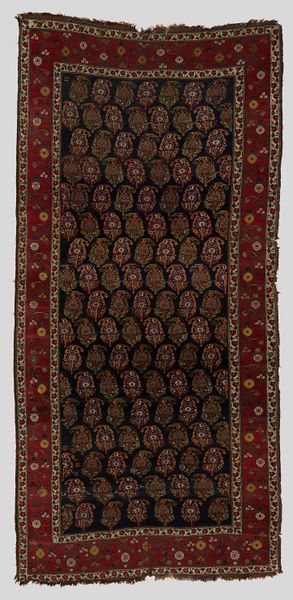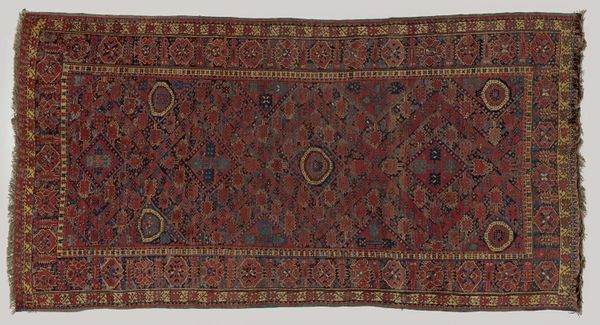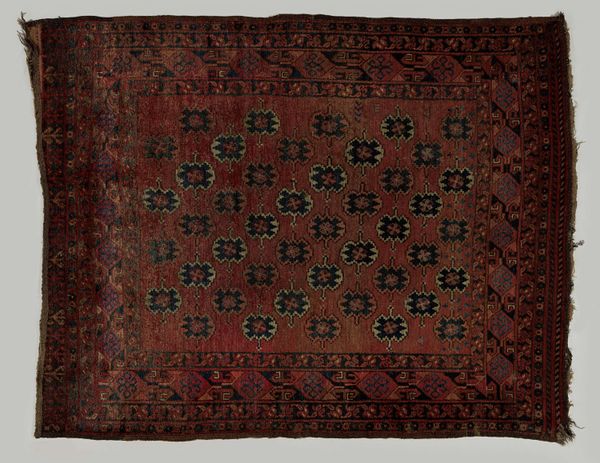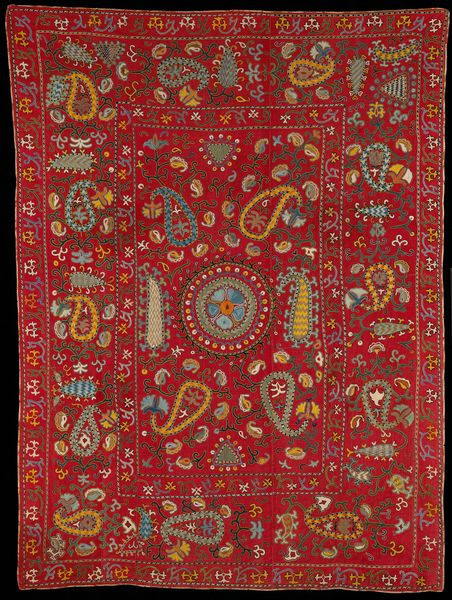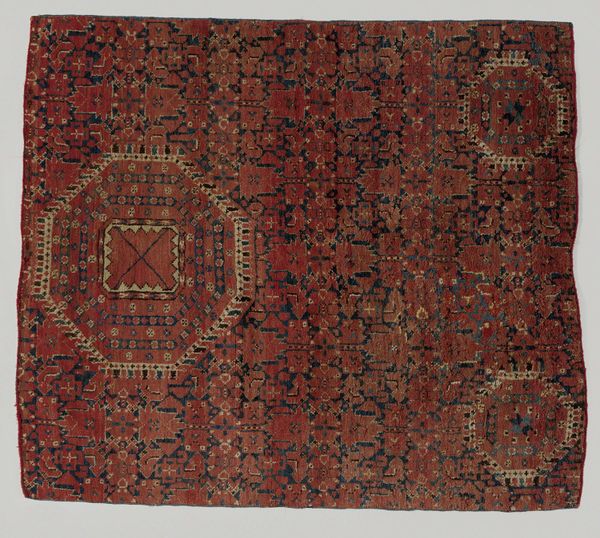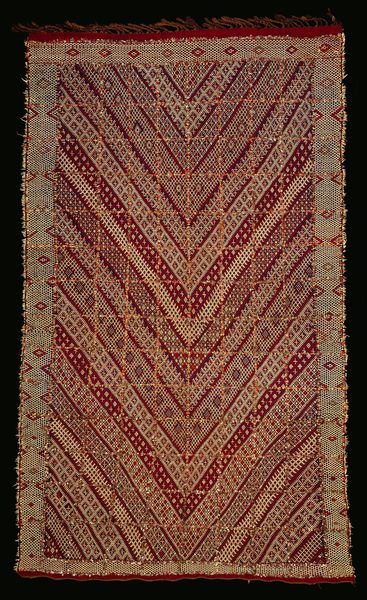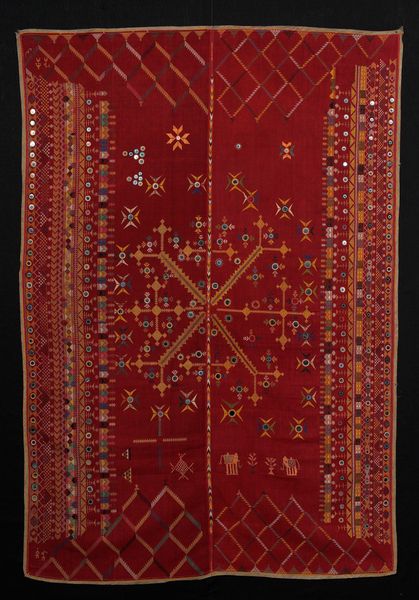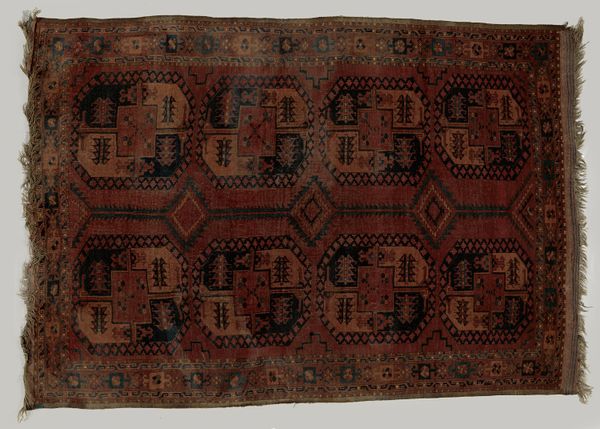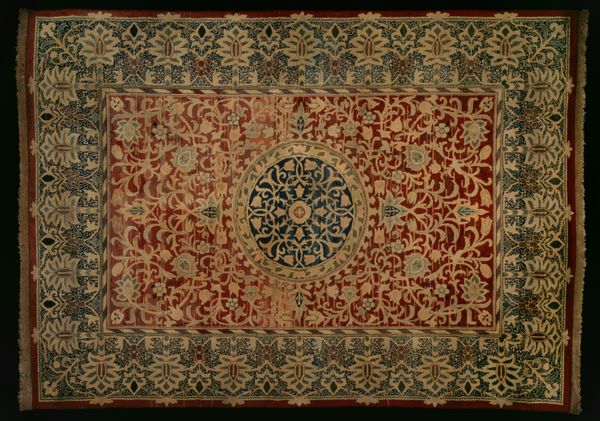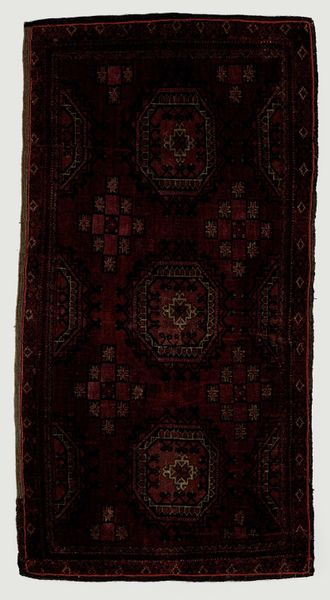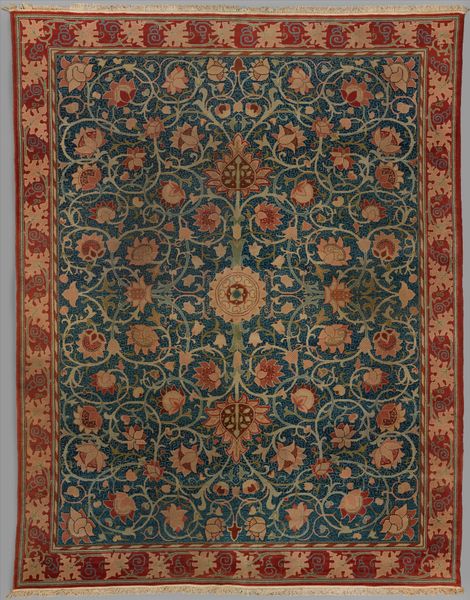
fibre-art, weaving, textile, cotton
#
pattern heavy
#
fibre-art
#
man-made pattern
#
pattern
#
weaving
#
textile
#
geometric pattern
#
geometric
#
geometric-abstraction
#
cotton
#
decorative-art
Dimensions: 60 x 36 in. (152.4 x 91.44 cm)
Copyright: Public Domain
This is a mattress cover, a "Yathra denkheb", and it was made by an anonymous artist. Looking at this piece, I'm struck by the dance of pattern. It’s a careful arrangement of shapes in blue and red, with each element placed just so. The surface has an almost quilted feel, which is not unlike the experience of building up a painting through layers, where the final image emerges from a process of accumulation and refinement. Up close, I love the tiny diamond shapes in the middle section. They feel like a microcosm of the larger design, but they also have their own internal logic. It's this kind of attention to detail that really draws me in. It speaks to a deep understanding of the medium. This cover reminds me a bit of the work of Anni Albers, who also explored the intersection of textile design and abstract art. Like Albers, the maker isn’t just creating a functional object, they're engaging in a visual conversation. It’s a reminder that art is all around us, if we take the time to look.
Comments
minneapolisinstituteofart almost 2 years ago
⋮
In Bhutanese homes large, firm cushions or low box-frame couches provide comfortable places to take one's rest. Colorful textiles called denkheb function as a type of mattress cover that both protects and embellishes the sleeping surface. The most prestigious form of denkheb originates in central Bhutan and consists of two panels of yathra cloth stitched together lengthwise. Yathra cloth is a heavy, woolen fabric that features wide bands of weft patterns alternating with colorful stripes. During the reign of Bhutan's second king (1926-52), however, a new style of yathra cloth became fashionable that imitated the designs used in Tibetan rugs. Small, geometric designs cover the surface of the cloth, and the piece is unified with a meander border the encloses the patterning.
Join the conversation
Join millions of artists and users on Artera today and experience the ultimate creative platform.
